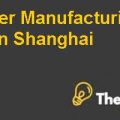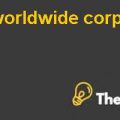
Problem statement
Nokia was the leading mobile company in the industry in 2007 with a profit of 7.2 billion Euros and just after three years in 2010, the company realized a dramatic decline in its profits. In the first quarter of 2010, its profits were 831 million Euros and in second quarter they were 643 million Euros.
Case Analysis
Entrepreneurial Characteristics
Entrepreneurs are generally defined as the first movers. To be an entrepreneur, several characteristics must be possessed by a person. A successful entrepreneur should have the motivation and passion of doing something new. Moreover, the entrepreneur should be a risk taker, have ability to actively manage funds, ability to plan, ability to build relationships, is prepared to take an exit, and knows the product & its market along with dedication to his work.
Nokia, in the start of the year 2010, was considering relying on the competence of CEO Olli-Pekka kallasvuo to continue as the CEO of Nokia Corporation however,later on the board of directors was of the view that they wanted an energetic and more skilled personality to accelerate the company’s renewal. Nonetheless,Mr. Olli-Pekka kallasvuo was a very experienced personality and had spent half of his life in Nokia and before becoming the CEO, he was the CFO and COO of the company. The analyst states that Mr. Olli-Pekka kallasvuo had been slow to innovate and despite of Nokia’s extraordinary infrastructure the growth of the company was slow.
Entrepreneurial growth as a process
Nokia, being the leader in the mobile industry for many years, saw a decline in the year 2010, which stopped the growth of the company. The company was losing its customers as new innovative products were launched by other companies in the market. The CEO of Nokia took immediate steps to cope up the situation. He planned the launch of smart phones, which were once their innovative products; now known as products of other companies offering better technology in their phones.
Nokia took a step forward and launched its own smartphone which was set in the competition of iPhone, the launch was a failure as the technology was not up to the level and the touch sensors were not accurate to react on a single touch. The product was a disgrace to the company and produced a negative goodwill for the company.
Life cycles of entrepreneurial growth
Nokia was in the growing phase of the life cycle up till the start of the year 2007. The company earned maximum profits in the year 2007. Things were going well for the company but the company after 2007 started to experience a decline in its profits and by 2009 when Nokia launched a mobile phone N97, which could not do well in the market and was a great disappointment for the company.Theday before the launch of N97 Apple launched 3GS which was far better in technology than Nokia’s N97.
The profits of the company started to decline, as the share prices came up to US $10/ share from US $40/ share. The company was on a decline but due to its large network around the world it made a reasonable profit. In the year 2010, Nokia was on thedeclining stage because of lack of innovation and technological draw backs.
Human Capital
Nokia is a company with a huge human capital on its end. The number of Nokia’s employees around the world is 132000. It operates in 120 countries and sellsin 150 countries around the world. Nokia started its research and development on smartphones and its operating systems in 2010 and employed 35870 employees from the group in 16 different countries.
A company with such big human capital has a lot of capacity to compete in any industry but the effectiveness of the human capital depends upon the plans and strategies of the management of the company. The leader of such a company is held responsible for the progress or the decline of the company because a company with such great human capital should not decline unless it is idle, ineffective, lack of innovation or working in the wrong direction.
Innovation and competitive advantage
Nokia, in the year 2007, was the most innovative and competitive in the mobile industry. Nokia was slow in innovating and the first mover’s advantage was taken away by Apple by launching their product iPhone, which recognized a great success and following iPhone, Android phones took great escalation in the industry of smartphone.....................
This is just a sample partial case solution. Please place the order on the website to order your own originally done case solution.











